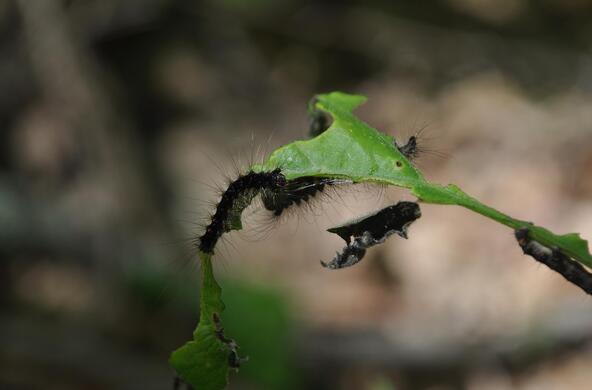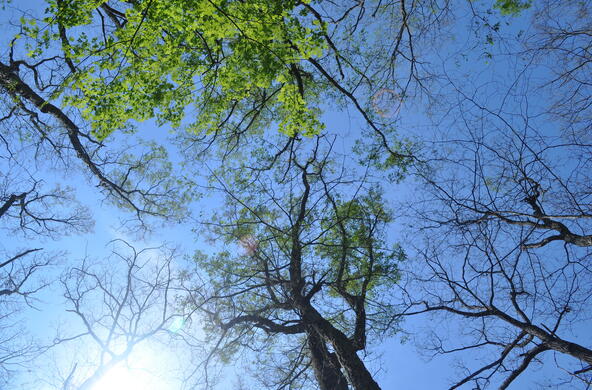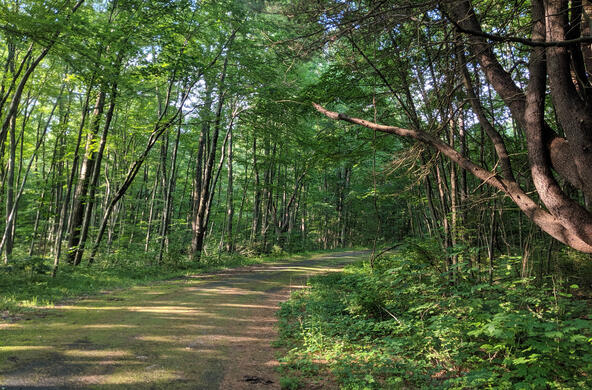Event brings together experts to raise awareness about invasive forest insects
Keene Valley, N.Y., June 27, 2016—The Adirondack Park Invasive Plant Program (APIPP) and the Adirondack Mountain Club (ADK) are co-hosting an Adirondack Forest Pest Summit, a free conference meant to help raise awareness about invasive insects negatively affecting New York forests. The event will take place at the Tannery Pond Community Center in North Creek from 10 a.m. to 4 p.m. on Monday, July 11th.
Forest pests such as hemlock woolly adelgid, emerald ash borer, and Asian long-horned beetle have the potential to cause major environmental and economic damage to the Adirondack region. These forest invaders are often spread by accidental transfer of firewood or nursery stock from an infested area. Prevention, early detection, and rapid response are critical to successfully combating any invasive species.
The summit is designed to provide a forum for sharing current information on best prevention and management practices and to inspire coordinated action in the Adirondacks and throughout the state to stop the spread of invasive forest pests. Presentations will be followed by a 30-minute media event at the end of the day.
Keynote speaker Dr. Gary Lovett, forest ecologist with the Cary Institute of Ecosystem Studies, will kick-off the event with a session called "Why we keep getting new forest pests and what we can do about it." Lovett, whose research focuses primarily on the effects of air pollution, climate change and invasive insects and diseases on forests, warns that invasive pests and pathogens represent "the most severe and urgent threat to our forests." In a study published in May in the journal Ecological Applications, Lovett and 15 colleagues estimated that 63 percent of forest land in the United States, or about 825 million acres, is at risk of increased damage from established pests, and new pests that continue to arrive with cargo shipments from overseas.
In addition to Lovett's presentation, the summit will feature the following topics and speakers:
- New York State's forest health conditions and DEC's response – Jerry Carlson, chief research scientist, New York State Department of Environmental Conservation division of forest health
- Don't Move Firewood: New York in a national perspective – Leigh Greenwood, Don't Move Firewood program manager, The Nature Conservancy
- DEC's response to the Asian long-horned beetle on Long Island – Jeffrey Speich, supervising forester, New York State Department of Environmental Conservation division of lands and forests
- The balsam & hemlock woolly adelgids: implications for the Adirondacks – Mark Whitmore, forest entomologist, Cornell University)
- Facilitating management of hemlock woolly adelgid in the Catskills – Chris Zimmerman, conservation ecologist, The Nature Conservancy
- Mitigating the impact of hemlock woolly adelgid on New York State parks – Robert O'Brien, invasive species control field director, New York State Parks
- Hemlock woolly adelgid biocontrol release and recapture success from New River Gorge – Dan Snider, field project manager, Catskill Regional Invasive Species Program
- The Adirondack backcountry forest pest monitoring program – Paul Gallery and Cathy Pedler, Adirondack Mountain Club advocacy and conservation
"We are pleased to be partnering with ADK to bring together under one roof such an impressive collection of experts—from researchers to natural resource managers—to discuss the significant and urgent threats posed by forest pests. The more we know, the better equipped we will be to protect Adirondack forests," said Brendon Quirion, Adirondack Park Invasive Plant Program Coordinator.
This event is free and open to the public. Participants are asked to RSVP so that organizers can plan accordingly for seating, supporting materials and refreshments. Please reply to Mitchell Jones: 518-576-2082 or mitchell.jones@tnc.org. Please include the number of participants attending, names, and contact information and use "ADK Forest Pest Summit" in the subject heading of your message.







